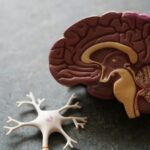World Diabetes Day is more than a date on the calendar—it’s a call to fix what’s broken in diabetes care. In a special live conversation, Jayne Bullen (Managing Director, Nutrition Network) sat down with Dr Neville Wellington (GP, Diabetes Director, and long-time metabolic clinician) to unpack the reality behind the ever-steepening diabetes curve—and what actually reverses it.
“We’re going to change the diabetes world one meal at a time, literally.” — Dr Neville Wellington
The Family Disease We Can Stop
Diabetes is increasingly a multi-generational problem. It shows up in grandparents, parents, and now their children—often within the same household.
“It’s a multi-generational family disease… the numbers are startling.” — Jayne Bullen
South Africa mirrors global trends: estimates suggest ~15% of the adult population lives with diabetes, with many more undiagnosed. Clinics see relentless new cases every month. Clinicians can barely keep up.
The takeaway? Treating symptoms won’t slow this curve. Fixing metabolism will.
Diabetes Is Metabolic—Not Just “High Blood Sugar”
“When they say ‘sugar diabetes,’ actually that’s what it is.” — Dr Wellington
Dr Wellington puts it plainly: chronic excess carbohydrate intake (which becomes glucose) drives insulin up, fills the liver and fat cells, and eventually overwhelms the system. For years, the pancreas masks the damage by pumping insulin to force glucose out of the bloodstream. When that compensation fails, blood sugar rises—and the diagnosis finally appears.
This is why “glucose management only” misses the mark. The root cause is insulin resistance, not a metformin deficiency.
What accelerates damage?
- Frequent glucose spikes from high-carb foods and drinks
- Guideline patterns pushing ~60% of calories from carbs for people already glucose-intolerant
- Underemphasis on food quality and meal timing, while focusing on calories alone
From Management to Reversal
Reversal is not wishful thinking. It’s a clinical pathway with measurable outcomes: improved post-meal glucose, falling medications, metabolic markers normalizing, quality of life rising.
“Once patients see what spikes them and change those meals, the magic starts to happen.” — Dr Wellington
What reversal looks like in practice
- Education first: explain what glucose does at a cellular level (inflammation, oxidative stress, mitochondrial overload).
- Food swap: move from glucose-spiking meals to protein, healthy fats, and low-glycaemic vegetables.
- Structured monitoring: use glucose data to prove what works for this person.
The Superpower: Structured Monitoring
Dr Wellington’s “safety-first” monitoring approach evolved into an empowerment tool.
“Test before you eat and one hour after you start eating… most foods spike at about an hour.” — Dr Wellington
How to monitor (minimum viable plan):
- Finger-prick glucose: before and ~60 minutes after meals
- Aim for pre-meal 4–6 mmol/L and post-meal under 7.8 mmol/L
- Watch the rise: keep meal-to-peak spike ≤1.7 mmol/L
- Even 10 post-meal checks/month can move HbA1c meaningfully because they drive dietary behaviour change
- CGMs (continuous glucose monitors) are powerful where accessible—revealing real-time spikes and trends
Ketone monitoring can validate metabolic flexibility (nutritional ketosis often 1.5–3.0 mmol/L β-hydroxybutyrate). Blood measures are more reliable than urine as adaptation increases.
About GLP-1 Medications: Where They Fit (and Don’t)
GLP-1 receptor agonists started as diabetes drugs and moved into obesity care. They reduce appetite, slow gastric emptying, and for some, quiet “food noise.” They also antagonize glucagon, useful in patients whose livers over-release glucose.
Dr Wellington’s view is nuanced:
- They can help—especially when lifestyle is already in place and glycaemia remains stubborn.
- Risks appear modest so far, but cost and regain after stopping are concerns.
- They’re not a substitute for metabolic education or dietary change. If a person returns to the old diet after stopping, weight and glucose rebound.
“Maybe the drugs can help you change your lifestyle, but you’ve got to maintain that lifestyle.” — Dr Wellington
Addiction, Behaviour Change, and Real Life
Many people know what to do, but can’t do it—yet. That’s not failure; it’s human. Dr Wellington increasingly addresses behavioural triggers, stress, and support systems.
- Name the pattern (gently): bingeing, “go-to” stress foods, anger when asked to remove certain triggers
- Build support: involve partners/family; bring them to the consultation
- Refer when needed: counselors for anxiety/depression; recovery-informed frameworks for addictive eating patterns
- Hold the line with hope: some patients take months before the “click”—then change accelerates
“About 45–50%—once educated—just go and change.” — Dr Wellington
Practitioner Playbook: Start Here (Safely, Tomorrow)
- Reframe the diagnosis
- Explain insulin resistance and the damage from repeated glucose spikes.
- Replace “progressive disease” messaging with credible hope and measurable steps.
- Prescribe monitoring, not guesswork
- Finger-prick glucose pre-meal and 60 min post-start.
- Teach “≤1.7 mmol/L rise” as the red/green light.
- Prefer post-meal checks over fasting if strips are limited.
- Swap meals, not willpower
- Center protein and healthy fats; add non-starchy veg.
- Replace trigger foods completely (for many, “cut down” fails).
- Deprescribe deliberately
- As glucose normalizes, review meds systematically (e.g., sulfonylureas first to avoid hypos).
- Keep safety front-and-center; adjust based on data.
- Build a support ecosystem
- Lean on educators and health coaches—they reinforce and sustain change between consults.
- Invite family; metabolic health is a team sport.
- Use GLP-1s judiciously
- Consider for specific phenotypes (e.g., glucagon-overdrive) or where lifestyle alone hasn’t normalized glucose.
- Pair with robust diet education; plan for maintenance.
Patient Essentials: The First 2 Weeks
- Test smarter: check glucose before and 60 minutes after your largest daily meal; learn what spikes you.
- Eat for stable lines: build meals around eggs, fish, meat, poultry, olive oil, butter, avocado, and leafy/non-starchy veg.
- Sleep & stress count: poor sleep and stress raise glucose—walk after meals, prioritize wind-down, sunlight, and routine.
- Don’t do it alone: bring a partner/friend on board; consider a coach.
- Stay in touch with your doctor: meds may need swift adjustment as your readings improve.
Stories That Change Trajectories
“Even after amputation, kidney disease, and eye disease—he brought his HbA1c to 5.4% and has held steady for years.” — Dr Wellington
For many who feel trapped by “family diabetes,” the message is simple: you can stop the slide. Even with complications, further damage is not inevitable. The lever is metabolic.
Train With Us: Turn Evidence into Outcomes
Nutrition Network exists to equip practitioners and coaches with rigorous, practical metabolic tools.
For Practitioners
Diabetes Reversal Training
A deeper dive into mechanisms, clinical protocols, deprescribing, case-based learning, and the growing evidence base for carbohydrate restriction in diabetes care.
“The science is rigorous… low-carb science is growing tremendously.” — Dr Wellington
For Everyone (Patients & Practitioners)
Diabetes Patient Training
A step-by-step “101” that covers carb counting, monitoring, medication safety, lab interpretation (HbA1c, lipids, inflammation, kidney function), and how to implement a metabolic plan at home—safely and effectively.
World Diabetes Day Offer:
From World Diabetes Day and for the rest of this month, the Diabetes Reversal Training is 50% off, and you’ll get the Patient Training free when you enroll in the practitioner course.
Two trainings. One price. Built to change outcomes—fast.
(Always loop in your treating clinician; as glucose improves, medications often need adjusting.)
Final Word
The future of diabetes care isn’t a bigger pill box. It’s better metabolism—taught clearly, monitored intelligently, reinforced with coaching, and delivered with hope.
“Changing diabetes and reversing it one meal at a time.” — Jayne BullenReady to help patients—and families—out of the spiral? Start with data. Swap the meals. Build the team. And if you’re a clinician or coach, get trained so your next consult is the one that turns the curve.










